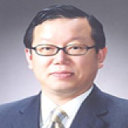Inhibitory effects of Scutellaria barbata D. Don. and Euonymus alatus Sieb. on aromatase activity of human leiomyomal cells.
Ključne besede
Povzetek
It is now well documented that a large proportion of breast tumors express their own aromatase. This intratumoral aromatase produces estrogen in situ and therefore may contribute significantly to the amount of estrogen to which the cell is exposed. Thus it is not only important that aromatase inhibitors potently inhibit the peripheral production of estrogen and eliminate the external supply of estrogen to the tumor cell, but that they in addition potently inhibit intratumoral aromatase and prevent the tumor cell from making its own estrogen within the cell. To study the inhibition of intracellular aromatase, we have examined the aromatase-inhibiting potency of the Scutellaria barbata D. Don. (SB) and Euonymus alatus Sieb. (EA) in myometrial and leiomyomal cells which contain aromatase. We have also used human placental tissues. Although SB and EA are approximately equipotent in a cell-free aromatase system (human placental microsomes), EA is consistently 10-30 times more potent than SB in inhibiting intracellular aromatase in myometrial and leiomyomal cells. To provide insights into the effect of SB and EA on aromatase activity in leiomyomal cells, we examined the cell lines, which is induced to differentiate toward the more transformed cell phenotype by 12-tetradecanoylphorbal-13-acetate (TPA) as a protein kinase C activator and transforming growth factor-beta1 (TGF-beta1). Enzyme activity was inhibited in a time-and dose-dependent fashion by SB and EA and by either 1-50 nM TPA or 0.01-0.5 ng/ml TGF-beta1, with maximal responses after 2-3 h exposure.


